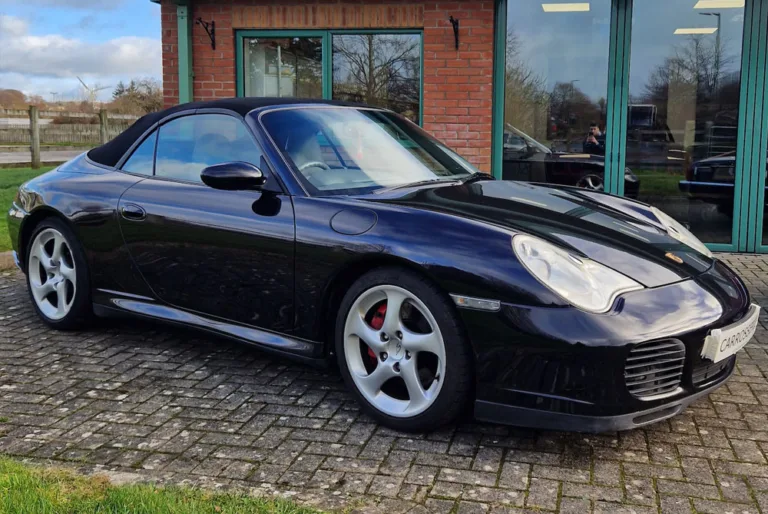
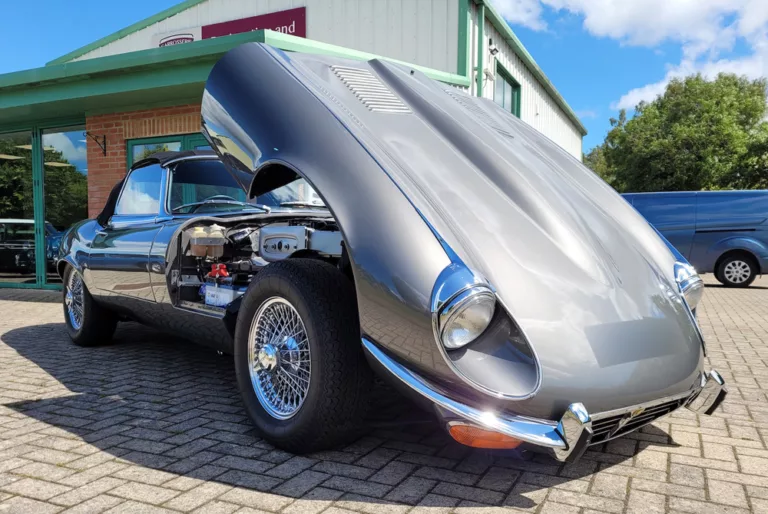
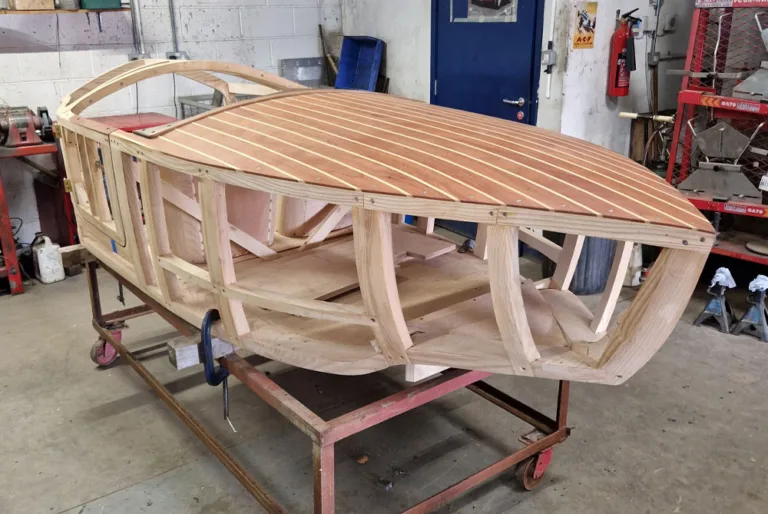
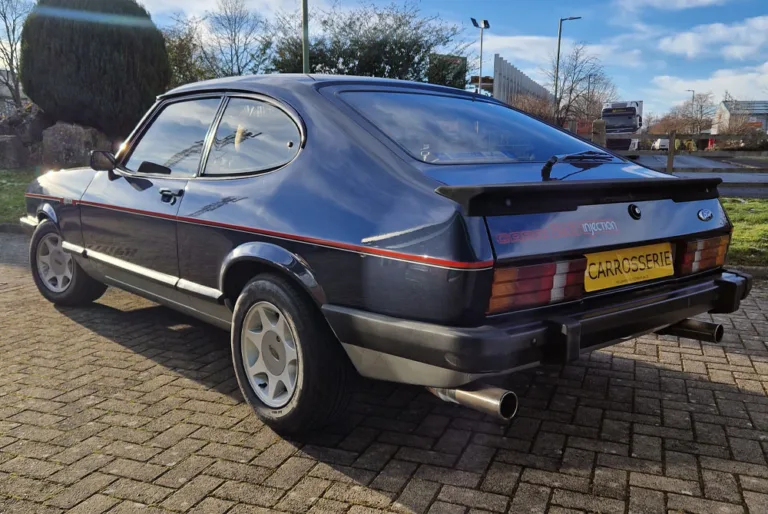
Sign up to stay informed about our latest restoration projects, industry news and more
By signing up, you agree to Bidding Classics Privacy Policy
Start your restoration journey with us today
25th May 2023: The main bodywork has been stripped back, repaired and the first coat of primer has been applied.
23rd June 2023: Main paintwork on the body is complete, but the bumper, sills, side mirrors, hood and grill are still to be completed.
Although the E36 or third generation BMW 3 Series first arrived on British shores in the early Spring of 1991 it may have escaped your attention that the stylish convertible versions didn’t appear until some three years later, suggesting that the conversion from hard top to soft was more than a mere tin-opener job.
Three engines were initially offered, the four-cylinder 318i and six-cylinder 320i and 325i derivatives. The 316i and diesel models were never available with the E36 convertible body shape. A couple of months later the 286bhp M3 Convertible was launched, a car that many felt never warranted the M badge, being far softer in focus than its boxily aggressive E30 predecessor.
March 1995 saw the introduction of the 328i Convertible, replacing the 325i whilst in January 1996 the M3 got even more power and a six-speed gearbox. The 321bhp M3 Evolution Convertible proved hugely popular with those who preferred carousing to cruising. Spring 1997 saw the introduction of the 2.5-litre 323i engine which replaced the 320i in convertible guise.
All models got a minor makeover in September 1997 that included equipment upgrades and subtly different front-end treatment. A sequential manual gearbox option for the M3 Evolution was introduced in January 1998 but didn’t prove popular. The Convertible survived until early 2000 when it was replaced by a Convertible version of the E46 series.
People often ask what the key is to get our paint to look better on a classic car than the day it was new.
Preparation – The initial stage of a preparation job will be repairing body panels. Depending on how lucky (or unlucky) you have been, this could either be a small job or a huge one. Due to the nature of some repairs (such as filling holes, rust removal and pulling dents), it is ideal to ensure that all your panels are in perfect condition before sanding the body down.
As well as repairing the panels, you will also need to remove brightwork such as bumpers and trims at this stage to ensure that the whole chassis is painted. This will also keep your shiny bits safe from potential harm.
The next stage in the process is sanding. Sanding a car ensures that the primer has a good “key” (a very slight roughness that the paint can stick to) and ensures a flat, level surface so that there are no imperfections. This stage is by far the most time consuming, as any flaws will become noticeable once the car has been primed ready for paint. The tried and tested method is to use 1,200 grit sandpaper to remove the clear-coat (topcoat) and the paint layer. Certain modern paints are incompatible with older primers/paints, so you may need to go back to the bare metal. Depending on the current quality of your finish, you may get away with only fixing certain areas or panels; if this is the case, you will use 2,000-2,500 grit wet & dry sandpaper to remove scratches and surface damage. If you are unsure about sanding, get in touch and speak to us about lending a hand.
The final stage of the bodywork preparation is priming. Priming gives the paint a uniform surface to adhere to and forms a protective layer underneath the paint. If the bodywork has been repaired properly, you will be able to admire your handiwork! Priming will also show if there is still work to do and gives you an opportunity to repair it before sending the car off to the paint booth.
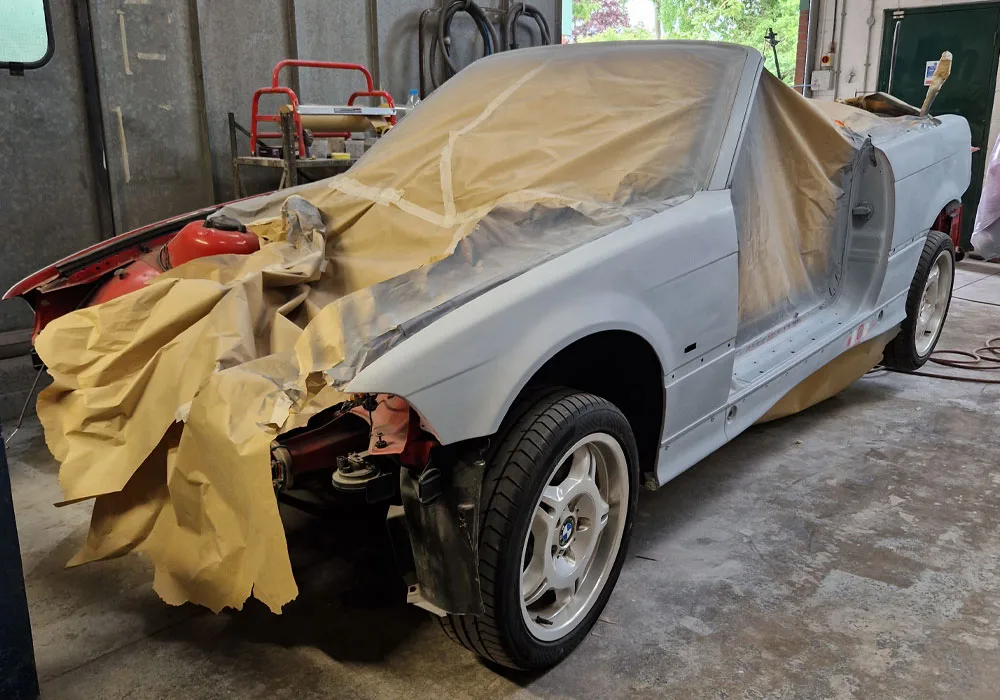
Are you ready to start your restoration journey with us?
Carrosserie House
Harmire Enterprise Park
Harmire Road
Barnard Castle
DL12 8XT
Tel: 01833 630 011 / Mob: 07973 616 478
Email: info@carrosserie.co.uk
Company No: 04339376
Privacy Policy




By signing up, you agree to Bidding Classics Privacy Policy
